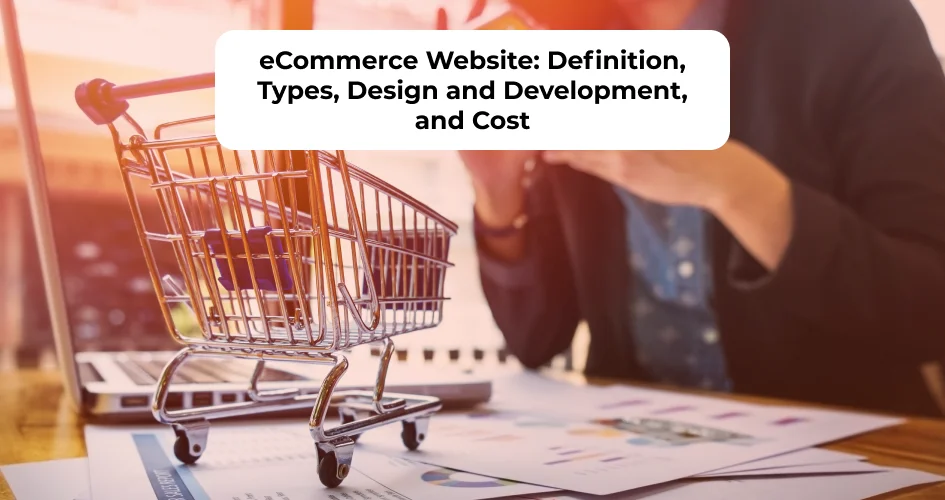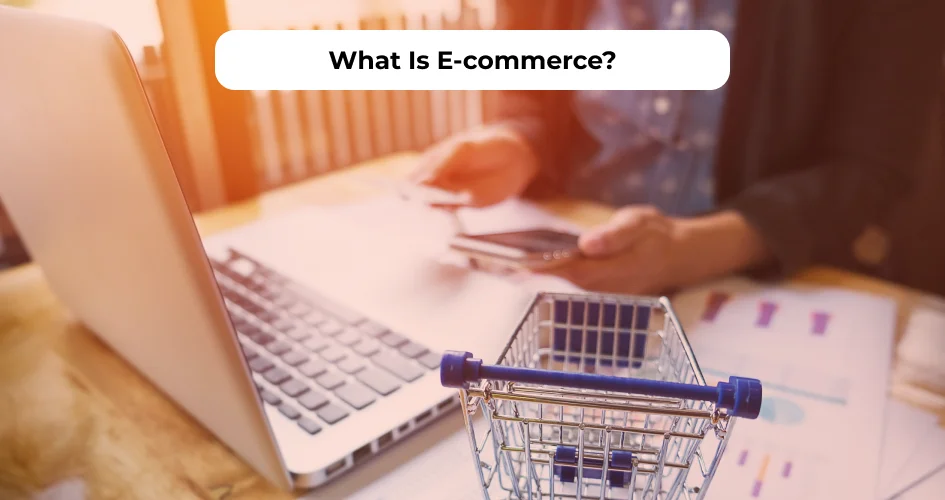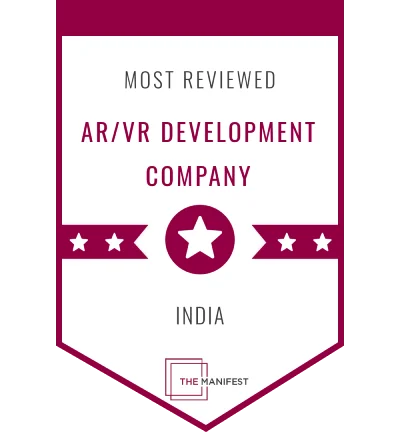Building scalable infrastructure is crucial to your eCommerce business success.
The infrastructure of eCommerce websites includes many aspects, from end-to-end technology to third-party services.
As your business grows, your eCommerce infrastructure should scale and continue supporting the business operations.
This article will discuss key components of scalable eCommerce infrastructure and strategies to build infrastructure that scales with your business.
You will also discover reliable solutions that can help scale your eCommerce website, from choosing a reliable web development company to solving supply chain problems.
Let’s dive right into it!
What Is eCommerce Infrastructure?
eCommerce infrastructure is the technology needed to operate and manage an online business.
The infrastructure of eCommerce websites includes the software, network, hardware, and services supporting business operations.
Scalability refers to the ability of the infrastructure to perform well under an increased workload.
It ensures your platform or website can meet growing demand and helps mitigate poor customer service, delays, and lost sales.
Moreover, a scalable eCommerce website can handle growth without sacrificing efficiency and quality.
Key Elements of Scalable eCommerce Infrastructure
Building scalable infrastructure for your eCommerce website requires careful planning and learning its important components.
In this section, we’ll discuss five key elements that make the infrastructure of the eCommerce platform scalable.
Web Hosting
Web hosting is renting or buying space to house a website via a web hosting provider.
This service offers various features like storage to store your eCommerce website’s files and make them accessible online.
Choosing a reliable hosting provider is a great start in building scalable online store infrastructure.
Therefore, consider several aspects when opting for one, including the data center, customer support, and features.
Performant eCommerce Website
An eCommerce website is the storefront of your business.
It’s where customers browse and purchase products.
Creating an engaging and optimized eCommerce website depends on many elements of your business.
These include:
- Business budget and type
- Inventory management requirements
- The needs of your marketing campaigns and strategies
Other factors that contribute to your eCommerce website’s success are responsive web design, functionalities, and user experience.
If you think you need help, a custom eCommerce web development company like Intelivita offers a solution for business owners who want to build an engaging and SEO-optimized eCommerce website.
Customer Relationship Management
Customer relationship management (CRM) refers to a business’s principles, guidelines, and practices regarding customer interactions.
For instance, an online business’s CRM includes its website, email, mailings, and phone calls.
CRM helps business owners manage and centralize their information on customers, providing easier access and customer support.
It can significantly increase sales, marketing, and customer retention.
Moreover, businesses can easily track the success of various campaigns or projects and identify emerging trends.
Data Management
In eCommerce, a database is a system that organizes and stores data, such as site content and transactional data.
With a database, an eCommerce website can focus on the presentation and behavior of the data.
As a result, the website’s code and logic are smaller and easier to understand.
Database management is important for building a scalable eCommerce infrastructure.
It helps you quickly respond to changing market conditions and update data.
It also provides up-to-date product information, such as product descriptions and prices.
Content Delivery Network
A content delivery network (CDN) is a network of servers across various geographical locations.
It’s designed to optimize the delivery of digital content over the internet.
CDN can reduce latency by distributing digital content to servers closer to the user.
It also ensures that your content remains available despite any issues with the origin server.
Furthermore, many modern CDNs provide additional layers of security.
They can identify and mitigate potential security threats, such as Distributed Denial of Service (DDoS).
Scalable eCommerce Infrastructure Best Practices
This section will show you six best practices to help you build a scalable eCommerce infrastructure.
1. Analyze the Existing eCommerce Infrastructure
Understanding whether building your eCommerce platform project is worth initiating is important.
You can review existing architecture to identify the challenges and requirements.
Suppose you want to review an eCommerce platform infrastructure that uses Magento as the main website, Shopify as the deal site, and POS as the in-store.
After that, you can analyze the challenges of this eCommerce infrastructure.
There are several software-related challenges this business faces:
- Overselling. This happens because Magento, Shopify, and POS don’t communicate with the order management system (OMS).
- Declined productivity. The productivity decreases due to paperwork, Magento extension patches, and conservations required to make the system work.
- More resources required. The business needs additional resources for data entry since connecting channels require manual entry in a spreadsheet.
2. Purchase eCommerce Microservices
Buying commerce services and APIs from third-party providers can help businesses plan a microservice-based infrastructure while simplifying service management.
A simple eCommerce website infrastructure consists of the following aspects:
- Backend. A robust set of applications includes a pricing engine, PIM, and OMS with a graphical interface. These independent and modular applications are equipped with APIs to provide flexibility as custom apps.
- Frontend. The front-end uses a headless CMS that supports multiple frameworks like React, Angular, and Vue to build reusable components. A headless CMS lets you control the shopping experience by integrating commerce services via APIs.
- API. Businesses must have an API middle layer to move away from conventional infrastructure. It micro-services elements of the tech stack one at a time.
3. Plan for Infrastructure Migration
eCommerce system migration is the process of opting for your existing eCommerce store from one platform to another.
The goal is to improve your online business performance by implementing advanced features of the new platform.
For instance, the cloud eCommerce migration process is:
- Pre-migration. The phase includes project initiation, requirement analysis, risk assessment, and migration strategy development.
- Migration. This stage consists of data backup and transfer, validation, application configuration and optimization, and testing.
- Post-migration. The phase covers performance monitoring, security implementation, and optimization review.
Furthermore, it’s important to classify data based on regulatory and sensitivity requirements before migrating your eCommerce infrastructure.
High-sensitivity data covers customer payment information, confidential business information, and personal identification details.
Meanwhile, medium-sensitivity data can be internal communications, and low-sensitivity data is publicly available information.
4. Develop a Multichannel Marketing Strategy
Reaching your target audience and achieving the marketing campaign goal is crucial to your eCommerce business’s success.
You can start with a modest marketing budget by running a few ads on social media.
Once you can generate steady traffic, bulk up your marketing to grow the business.
To do this, we recommend utilizing a multichannel marketing strategy.
The following are several tactics to consider:
- Creating a content strategy and publishing calendar
- Planning advanced email marketing campaigns
- Maximizing organic and paid social media marketing strategies
- Planning user experience research and conducting A/B tests
- Encouraging customer reviews to build brand identity
5. Improve Business Customer Support
As your eCommerce business grows, customer service becomes one of the most crucial factors in providing a great customer experience.
To improve your business customer service, consider the following strategies:
- Develop an FAQ page. This page can be a source of truth to common customer questions.
- Add a chatbot. If your customer support team cannot effectively handle customer queries, consider integrating a chatbot into your customer service platform.
- Invest in virtual assistants. You can hire freelance virtual assistants to help your customers with basic concerns.
- Outsource order fulfillment. Consider opting for a third-party provider to help you handle and manage order fulfillment, reducing limit order issues and eliminating reverse logistics from your workload.
6. Regularly Maintain eCommerce Infrastructure
Regular maintenance on your eCommerce infrastructure ensures more optimized and faster site performance, allowing your eCommerce website to operate efficiently.
You can schedule routine infrastructure checks.
If software is buggy and hardware is near failure, these checks can help catch the issues before they impact your eCommerce website performance.
A system backup is crucial to mitigate unexpected problems related to your eCommerce infrastructure software.
Scheduling regular backups can give you fail-safes in case of an emergency.
Solutions for Building Scalable eCommerce Infrastructure
Building a scalable eCommerce infrastructure requires careful planning and execution.
As you develop your online business, you might face challenges.
Implementing the right solution to each challenge is important to minimize long-term disadvantages to your business performance.
We’ll discuss several common challenges and their best solutions.
eCommerce Infrastructure Limitations
It’s common for business owners to face infrastructure limitations.
These can include a high traffic volume that causes their website to crash and inefficient inventory management due to a large product volume.
Choose a robust eCommerce service provider that offers tools to handle a high traffic volume and hundreds of transactions.
You can opt for a content management system (CMS) like Magento or Shopify Plus.
These CMS platforms offer features that help scale your business performance.
Alternatively, you can hire a custom eCommerce web development company to help you build a website.
Intelivita offers inventory management solutions to optimize stock levels, reduce overheads, and ensure product availability even when demands increase.
We use omnichannel retail systems that connect your offline and online operations and personalized shopping experience seamlessly.
Poor Customer Service
Maintaining and handling the same level of personalized customer service can be challenging as your customer base grows.
Poor customer service experience can lead to dissatisfaction and damage your brand image.
We recommend using a customer relationship management system to manage customer interactions effectively.
CRM provides dashboards, reports, and insights about your customers.
One of CRM’s benefits is that it helps you create a single source of truth for your eCommerce customer data.
It allows you to store and manage the data in one location, making accessing, updating, and sharing with relevant stakeholders easier.
More Complex Business Operations
Eventually, your eCommerce website will grow and become more complex.
Regular audits can help you identify bottlenecks and ineffectiveness, allowing you to address them before they become major issues.
Auditing on an eCommerce website provides a thorough check to ensure every aspect functions and works well.
For example, you can test your website to see whether it performs smoothly and offers a great user experience across devices and browsers.
Supply Chain Issues
Faster business growth can strain supply chains, resulting in delayed product stock-outs or deliveries.
Ensure that you invest in a flexible and reliable supply chain.
To do that, you can diversify suppliers, invest in advanced inventory management tools, and build strong relationships with logistics providers.
Conclusion
The infrastructure of eCommerce websites is the main point of online business operations.
Building a robust eCommerce architecture can be challenging since it requires well-planned strategies.
You need to understand the key components of scalable infrastructure for your eCommerce website, including web hosting, performant website, CRM, and CDN.
When developing your eCommerce infrastructure, it’s important to follow best practices.
For instance, analyze an existing infrastructure to learn how it’s built and purchase eCommerce microservices to help you simplify service management.
As your eCommerce business runs, you might encounter several challenges that require the right solutions.
Whatever challenge you may face during the online store development, opt for a reliable eCommerce service agency like Intelivita.












